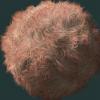 Researchers led by Dr. Yoshiki Sasai from the RIKEN Centre for Developmental Biology in Kobe, Japan constructed retina-like structures from cultured mouse embryonic stem cells last Spring. Their achievement this week is truly an amazing feat-- constructing a pituitary gland from mouse stem cells.
Researchers led by Dr. Yoshiki Sasai from the RIKEN Centre for Developmental Biology in Kobe, Japan constructed retina-like structures from cultured mouse embryonic stem cells last Spring. Their achievement this week is truly an amazing feat-- constructing a pituitary gland from mouse stem cells.The pituitary gland is a pea-sized endocrine gland at the base of the brain that secretes hormones like Human Growth Hormone (HGH) and thyroid stimulating hormone (TSH) that play key roles in human growth, pregnancy, blood pressure, and thyroid function. It's especially crucial during early development, so armed with the ability to simulate the formation of the pituitary gland could help researchers better understand how these developmental processes function. Hormone disorders result from inadequate release of certain hormones like these by the pituitary gland. Growth disorders such as gigantism, vision problems, and even blindness are also associated with disruptions in the pituitary.
This study, published in this week's issue of Nature, is a crucial step forward in medical science's ability to bioengineer complex organs for human transplantation.
Using a three dimensional culture, the team placed the mouse stem cells in a manner that mimics the way a pituitary gland naturally grows in the embryo. The gland is naturally made up of two different tissue types in the brain. The culture in the study was set up so that these two tissues would come together as they do in the brain.
After 13 days in culture, mouse embryonic stem cells
had self-assembled the precursor pouch, shown here,
that gives rise to the pituitary gland.
Nature
"Using this method, we could mimic the early mouse development more smoothly, since the embryo develops in 3-D in vivo," says Yoshiki Sasai, the lead author of the study.
Rathke's pouch - a fold of tissue - formed naturally and grew into the pituitary gland after about two weeks. Prior to this, the researchers only had a vague sense of the signaling factors necessary to form a pituitary gland, but after trial and error, the winning combination involved two main steps, requiring the addition of two growth factors and a drug called "sonic hedgehog" to stimulate a developmental protein. Then, the researchers tested the functionality of their synthesized organs by transplanting the tissue into mice with pituitary dysfunction. The transplants were a success! Levels of glucocorticoid hormones in the blood and behavioral symptoms such as lethargy were stabilized. The mice's hormone levels soon returned to normal.
"This is just an initial step toward generating viable, transplantable human organs, but it's both an elegant and illuminating study," says Michael G. Rosenfeld, a neural stem-cell expert at the University of California, San Diego.
Next, Sasai and colleagues will be attempting the experiment with human stem cells. Sasai suspects it will take them another three years to synthesize human pituitary tissue and perfecting the transplantation methods in animals might take another few years. Still, researchers in the stem-cell field and biomedical researchers on the whole are impressed with what Sasai's team has accomplished. Yet another small victory aimed for the big win!</br>
</br>
Reference:
Westly, Erica. "Researchers Create a Pituitary Gland from Scratch." Technology Review. MIT Technology Review, 9 Nov. 2011. Web. 11 Nov. 2011. http://www.technolog...ne/39108/?p1=A1.
View the full article













































